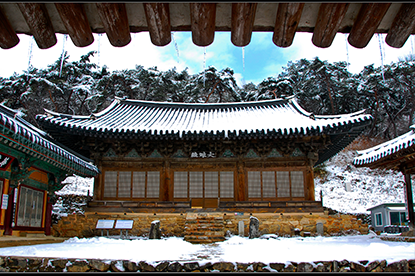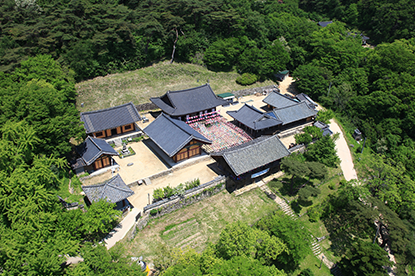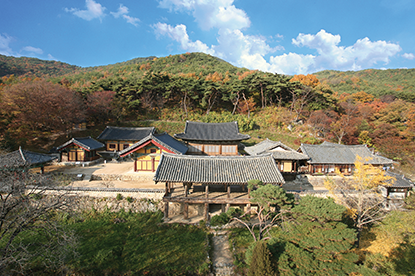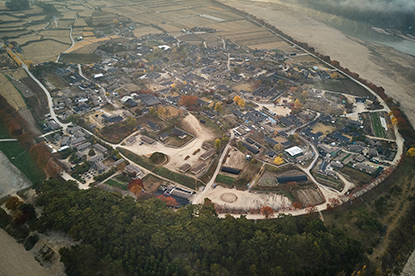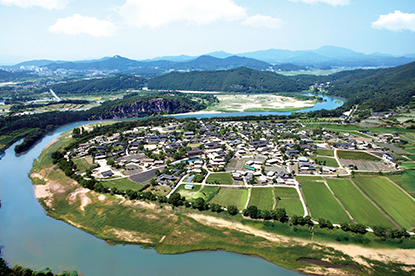Korean Heritage Passport Tour
- Incheon International Airport PR Center (Traveler Center)
- Gaya Culture Route
- Gwandong Pungryu Era Route
- Baekje Antiquity Route
- Korean Temple Monasteries (Sansa) Route
- Korean Confucian Academy Route
- Prehistoric Landscape Route
- Mythic Landscape Route
- Folk Music Route
- Royalty Route
- Golden Era Route
Gyeongju, Andong - Follow the spirit of Korea
Massive ruins often leave us in awe, old buildings move us on the inside, and sophisticated relics make us wonder. Sometimes, traditional music get our fingers tapping, and entertaining traditional games can excite us. People live only a hundred years or so. But they manage to create things that last generations. Some are important parts of our lives even today. Time and history can make things special. But the emotions our Korean Heritages evoke are not just a function of the sense of history they exude - rather, the emotions come from the “spirit” they represent. All cultures are born from the human mind. This invisible spirit is reflected in not only our tangible heritage, but also our intangible heritage. Thus, visiting places with either tangible or intangible heritages is a means to connect with the spirits from our past. This mystical journey along the Golden Era Route is highlighted by two cities that appear in stark contrast to one another. These two cities are Gyeongju and Andong. One served as the capital of Silla for a thousand years, while the other is considered the capital of Korean spiritual culture.
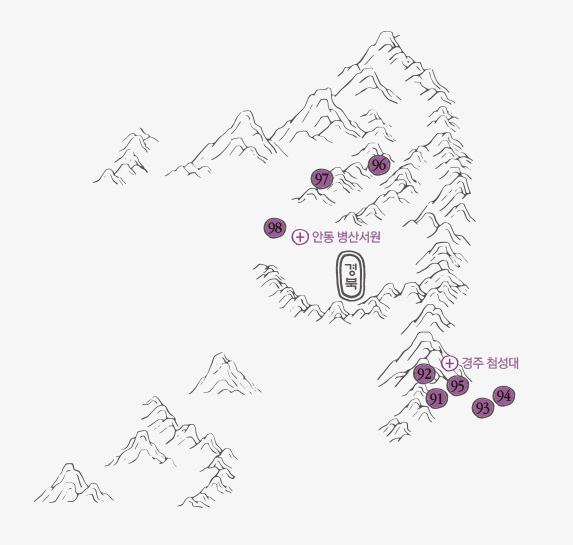
Gyeongju and Andong are popular tourist destinations in Korea. They are easy to access via public transportation or by car. Gyeongju has an extensive train and bus network, which gives you more options when it comes to getting around the city. If you decide to take the KTX train, the KTX Singyeongju station is a fair bit away from downtown Gyeongju. To head downtown, you will need to take an intra-city bus or a taxi. If you plan on staying in Gyeongju alone, you can use its public transportation network. But if you want to visit Andong as well, you would be better off driving your own car. We recommend renting a car in Gyeongju if your itinerary includes a trip to Andong. Meanwhile, Hahoe Village, Dosanseowon, and Bongjeongsa Temple are quite far away from downtown Andong. But you can still get there on the intra-city bus. Please keep in mind that visiting all three places may be unrealistic since they are spread out in different directions from the city. If you are going to take the bus, we recommend choosing a couple of places you absolutely want to visit.
Gyeongju
A time machine to SillaThe kingdom of Silla, which lasted a millennium, never moved its capital throughout its long history. Naturally, Gyeongju is home to countless relics and ruins from the Silla period, and new artifacts are being discovered every day. The locals in Gyeongju often joke that they cannot build a subway because you are almost guaranteed to find some invaluable relic if you dig into any part of the city. New ruins and relics mean that the past spirits of Silla still have plenty of things to tell us. That is why Gyeongju always feels fresh and new. The melding of our past, present, and future in Gyeongju can offer new opportunities for exciting adventures featuring resources from our Korean Heritage.
Flavors of Gyeongju might just leave a lasting memory
-
Gyeongju Gyodong Beopju
Gyodong Beopju is an alcoholic beverage first brewed by Choi Guk-seon, who served as a Chambong at the Saongwon (a government office that managed the king's meals and court cuisine) during the reign of King Sukjong of the Joseon Dynasty. It has a rich flavor and aroma, which fits its 350-year history. In recognition of its heritage, Gyodong Beopju was designated as National Intangible Korean Heritage no. 86-3 by the Korean government in 1986.
-
Ssambap
Ssambap includes wrapping rice and Doenjang in vegetables such as lettuce, Chinese cabbage, and sesame leaves, usually with grilled pork or bulgogi. Ssambap is a local favorite in Gyeongju, which is why it has a “Ssambap Street.” So, why not add the healthy Ssambap on the list of meals you would like to try in Gyeongju?
-
Hwangnamppang
Hwangnamppang is a type of bread with red bean paste filling inside a wheat flour dough. When it is baked, comb patterns are added to the surface. Hwangnamppang was first made in Hwangnam-dong, Gyeongju, in 1939. The customers who bought the bread, rather than the baker, began calling it Hwangnamppang, and the name eventually stuck. Hwangnamppang has been designated a local traditional food and is the product named as a “myeongpum” product of Gyeongsangbuk-do.
-
Chalborippang
Chalborippang is a bread made from glutinous barley and whole oats harvested locally in Gyeongju. Chalborippang, which has a texture that feels like a chewy hotcake, makes a great gift as the savory barley taste blends well with the sweet red bean paste.
Andong
A major hub of Confucian culture and spiritual sanctumAndong has great pride in its traditions, and the city is renowned for its culture of scholastic excellence built by Confucian scholars, and also the humor and satire added to its local folk culture. The fact that the city retains the original form of Confucian culture suggests that Andong values its heritage. Confucianism was the foundation of nationwide governance and social ethics in the Joseon Dynasty, and it continues to play an influential part in our lives to this day. Traveling to Andong is like winding back the clock and immersing yourself in Confucian culture, and communing with the roots of Korean spiritual culture. Andong can offer a chance to learn the value of the spiritual side of yourself, and also an opportunity to discover parts of yourself you may have forgotten.
Flavors of Andong might just leave a lasting memory
-
Andong Salted Mackerel
With no direct access to the sea, fresh fish was hard to find in Andong. So, merchants salted mackerel caught in the East Sea to make sure they would remain edible until they reached Andong. Eventually, salted mackerel became a delicacy and specialty of Andong.
-
Andong Soju
Andong Soju is a distilled soju drink brewed with a recipe that has been handed down for generations in local aristocratic families since the Goryeo Dynasty period. It was mainly served to guests or during ritual ceremonies. Despite its high alcohol content (45%), Andong Soju offers a refreshing aftertaste and understated aroma, which improves with time.
-
Hahoetalppang
Hahoetalppang is a snack made in the shape of a Hahoetal mask. With either red bean paste or custard cream inside, Hahoetalppang is soft and sweet. On the back it even bears the name of the particular Hahoetal mask it is meant to be at the front. It is a delicious and fun little snack that could be perfect as a gift idea.
-
Andong Heotjesabap
Heotjesabap is a meal featuring a bowl of rice mixed with various ingredients seasoned with soy sauce. The dishes served as part of the Heotjesabap meal are usually offered as tribute during ancestral rites, which is why each dish is served on its own plate. When served, you mix the dishes into your rice yourself. After every Heotjesabap meal, Andong Sikhye is served as dessert.
-
Andong Jjimdak
Andong Jjimdak is cooked with chicken and vegetables cut into bite-sized pieces, vermicelli noodles, and a soy sauce-based seasoning. The ingredients are mixed in together and sautéed until little soup is left. The light chicken meat fits perfectly with the savory, spicy, and sweet vegetables, which is why Andong Jjimdak is a popular choice for almost everyone.
-
Andong Sikhye
Sikhye is a fermented rice beverage with malt. The recipe includes glutinous rice, radish, red pepper powder, and ginger. Malt water is then poured onto the ingredients, which is then left a few hours to ferment. Andong Sikhye is a beloved beverage that offers a great blend of sweet, savory, and spicy flavors.
Gyeongju
A time machine to SillaThe kingdom of Silla, which lasted a millennium, never moved its capital throughout its long history. Naturally, Gyeongju is home to countless relics and ruins from the Silla period, and new artifacts are being discovered every day. The locals in Gyeongju often joke that they cannot build a subway because you are almost guaranteed to find some invaluable relic if you dig into any part of the city. New ruins and relics mean that the past spirits of Silla still have plenty of things to tell us. That is why Gyeongju always feels fresh and new. The melding of our past, present, and future in Gyeongju can offer new opportunities for exciting adventures featuring resources from our Korean Heritage.
Korean Heritage festivals in Gyeongju
-
Confucian Academy Program for Cultural Leadership in the 21st Century
Immersive scholastic program “Eumpungnongwol” features the biography of scholars enshrined at Confucian Academies, tea ceremonies and daily etiquette, poetry program, etc.
For more details, please check the festival’s official website below.
Website https://www.cha.go.kr/
-
Silla Cultural Festival
Various performances and events related to Shilla, various immersive programs, etc.
For more details, please check the festival’s official website below.
Website www.gyeongju.go.kr/sillafestival
Andong
A major hub of Confucian culture and spiritual sanctumAndong has great pride in its traditions, and the city is renowned for its culture of scholastic excellence built by Confucian scholars, and also the humor and satire added to its local folk culture. The fact that the city retains the original form of Confucian culture suggests that Andong values its heritage. Confucianism was the foundation of nationwide governance and social ethics in the Joseon Dynasty, and it continues to play an influential part in our lives to this day. Traveling to Andong is like winding back the clock and immersing yourself in Confucian culture, and communing with the roots of Korean spiritual culture. Andong can offer a chance to learn the value of the spiritual side of yourself, and also an opportunity to discover parts of yourself you may have forgotten.
Korean Heritage festivals in Andong
-
Andong Mask dance Festival
Andong Mask dance Festival is a platform where mask dance groups from Korea and abroad can come together and showcase their skills. It offers a chance for people to interact and exchange their cultures. The Festival is a showcase for Korean mask dances designated as national intangible cultural assets and mask dances from various countries across the globe. This folk festival features the International Mask Dance Competition, International Creative Mask Contest, and other immersive programs to help promote the local area.
For more details, please check the festival’s official website below.
Website www.maskdance.com
-
Andong Wolyeong Night Trip
Andong Wolyeong Night Trip is offered during the evening hours in summer every year. You can dive into the rich Korean Heritage, legends, and history of Andong in the moonlight with cultural programs available near Wolyeonggyo Bridge.
For more details, please check the festival’s official website below.
Website www.adnighttrip.com
- Gyerim Forest, Gyeongju
- Daereungwon Tomb Complex, Gyeongju
- Bulguksa Temple, Gyeongju
- Seokguram Grotto, Gyeongju
- Wolseong Palace Site, Gyeongju
- Dosanseowon, Andong
- Bongjeongsa Temple, Andong
- Hahoe Village, Andong
Dosanseowon in Andong, the Mecca of Confucianism in the Yeongnam region
-
Address
154, Dosanseowon-gil, Dosan-myeon, Andong-si, Gyeongsangbuk-do
-
Inquiries
054-856-1073
-
Opening hours
March~October: 09:00~18:00 (Last admission: 17:30)
November~February: 09:00~17:00 (Last admission: 16:30) -
Stamp
Cultural commentator booth at the tourist information center
-
Admission
Adults KRW 1,500 / Teenagers, Soldiers KRW 700 / Children KRW 600
-
Website
-
Directions
Get off at the KTX Andong station → Take bus no. 11 at the Andong Terminal bus stop → Get off at Kyobo Life Insurance bus stop, then transfer to bus no. 1 → Get off at Dosanseowon bus stop → Walk for 25 minutes
Among the long list of renowned Confucian scholars from the Andong region, Yi Hwang (pen name: Toegye) was one of the most important figures in Neo-Confucianism - he played a key role in organizing the Neo-Confucianism school of Confucianism in Joseon. He served four kings (King Jungjong, Inseong, Myeongjong, and Seonjo) after passing the national exam for court officials at the age of 34. He built Dosan Seodang in 1561 CE (16th year of King Myeongjong) to promote academic research and train a new generation of Confucian scholars. Later, when he passed away, writers and Confucian scholars converted Dosan Seodang into today’s Dosanseowon to commemorate Yi Hwang’s academic achievements. Andong Dosanseowon is divided into Dosan Seodang and Dosanseowon in terms of its architectural configuration. Dosan Seodang is the oldest building inside the Dosanseowon, and was designed and built by Yi Hwang himself. It is said that he lived in Dosan Seodang and spent much of his time teaching his disciples. Nongunjeongsa adjacent to Dosan Seodang was also designed by Yi Hwang. The building, which is a dormitory for students, has a rare layout that is in the shape of the character “Gong (工).” It reflects Yi Hwang's hope that his students could really apply themselves to their studies. Meanwhile, Dosanseowon, which was built in 1576 CE, six years after Yi Hwang’s death, has several other structures. Structures that could be worth paying particular attention to are Sangdeoksa (enshrined the ancestral tablet of Yi Hwang), Sammun (main gate of Dosanseowon), and Jeongyodang (treasure, the main lecture hall of Dosanseowon). Dongjae and Seojae (student dormitories), Gwangmyeongsil (library), and Jangpangak (printing office) are also interesting places in their own right. Sangdeoksa Shrine and Main Gate of Dosanseowon - Sangdeoksa Shrine, located at the rear of Dosanseowon, a private educational institution built during the Joseon Dynasty, is a shrine dedicated to Yi Hwang (1501~1570 CE), a renowned scholar in the mid-Joseon Dynasty period, who served the royal court in various capacities and devoted his life to academic research as well as teaching future generations. Although originally built in 1574 CE (7th year of King Seonjo), the Dosanseowon that remains today was repaired in 1969. Jeongyodang Lecture Hall of Dosanseowon - Jeongyodang was an auditorium where students could study. To either side of Jeongyodang is Dongjae and Seojae, both student dormitories.
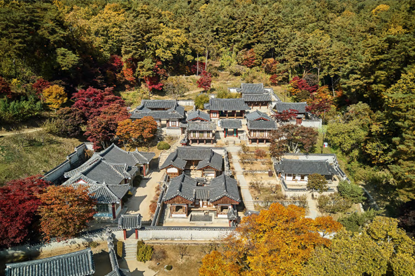
Provided by the Korea Korean Heritage Foundation

Provided by the Korea Korean Heritage Foundation
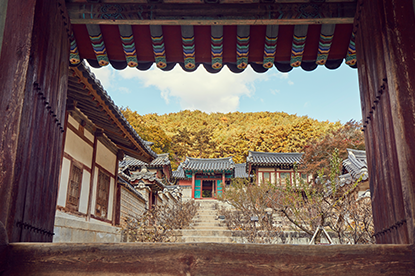
Provided by the Korea Korean Heritage Foundation
 “Dosanbyeolgwa,” a special exam from the Joseon Dynasty period
“Dosanbyeolgwa,” a special exam from the Joseon Dynasty period
Yi Hwang (pen name: Toegye) was highly respected not only by Confucian scholars, but also by the kings he served. King Jeongjo, the 22nd monarch of the Joseon Dynasty, established a special national examination in 1792 CE to commemorate Yi Hwang's academic excellence and achievements. This test, called “Dosanbyeolgwa,” was the only test that selected local talent from rural regions, and was the only Daegwa exam hosted away from the capital. Originally, Dosanbyeolgwa exams were to be hosted at Dosanseowon itself. But the Academy was unable to accommodate more than 10,000 applicants, which is why it was hosted at Sisadan. To commemorate the Dosanbyeolgwa, Andong hosts an annual reenactment of the Dosanbyeolgwa exam.









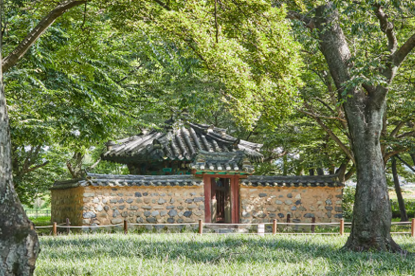

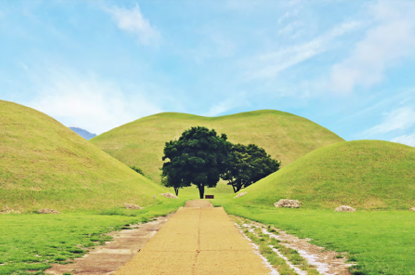
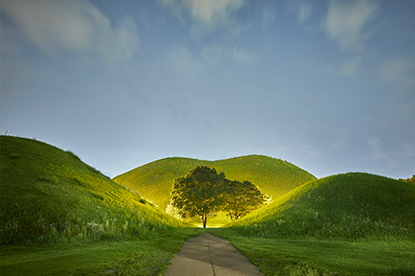

 Daereungwon Doldamgil
Daereungwon Doldamgil

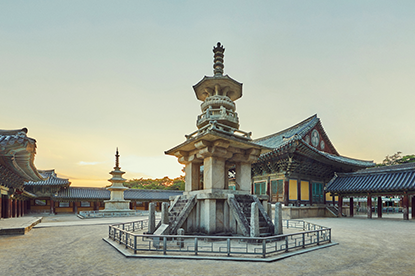
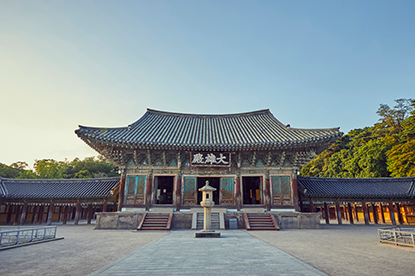
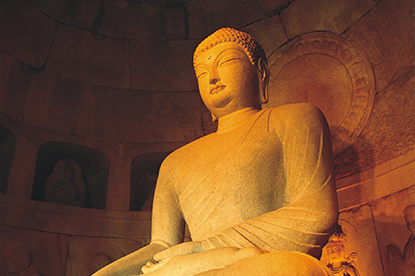

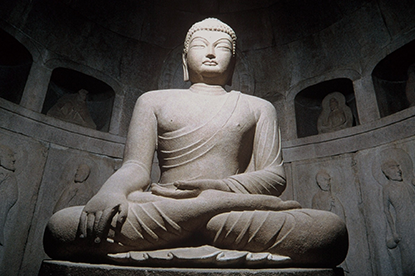

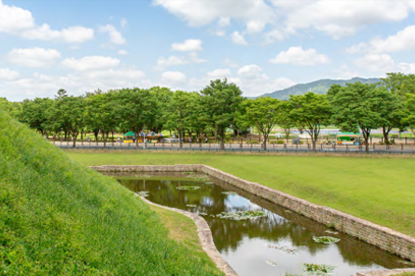
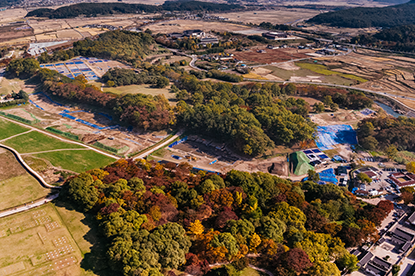
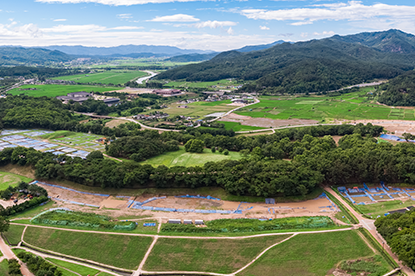
 Wolseong Excavation Site
Wolseong Excavation Site
